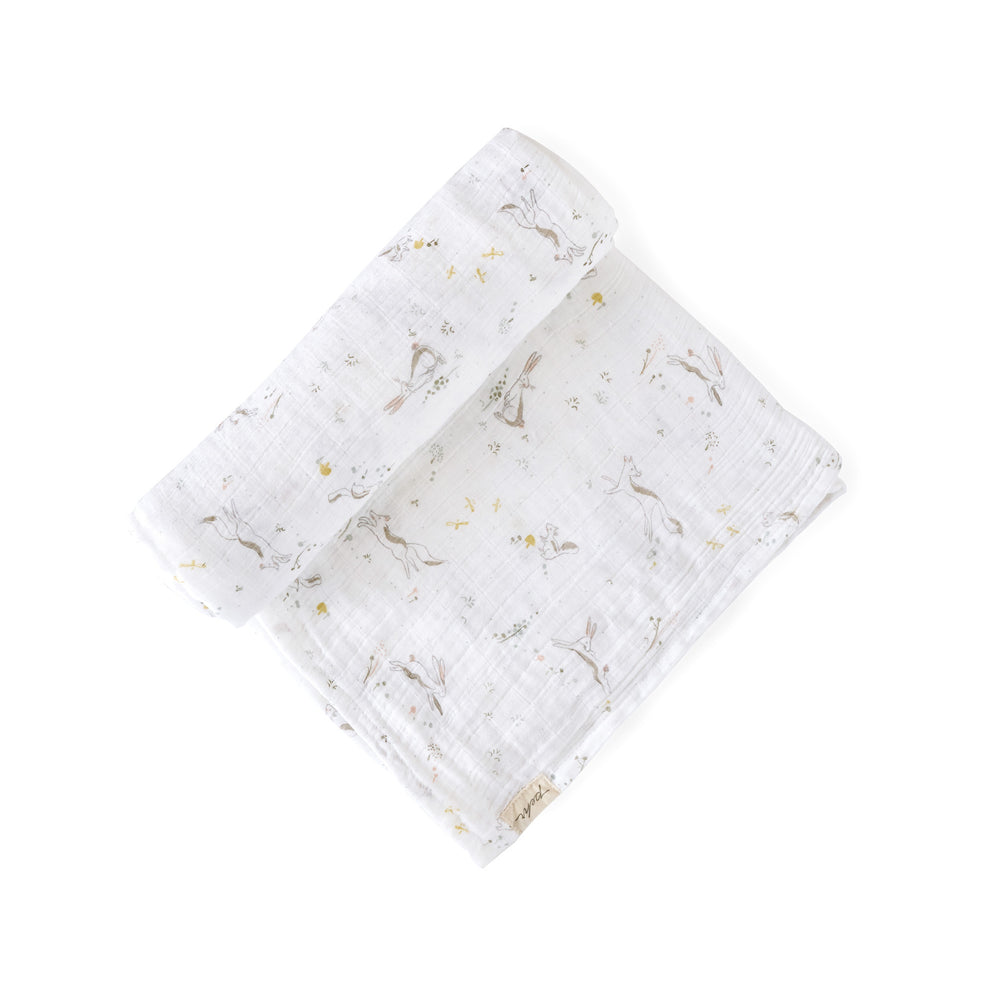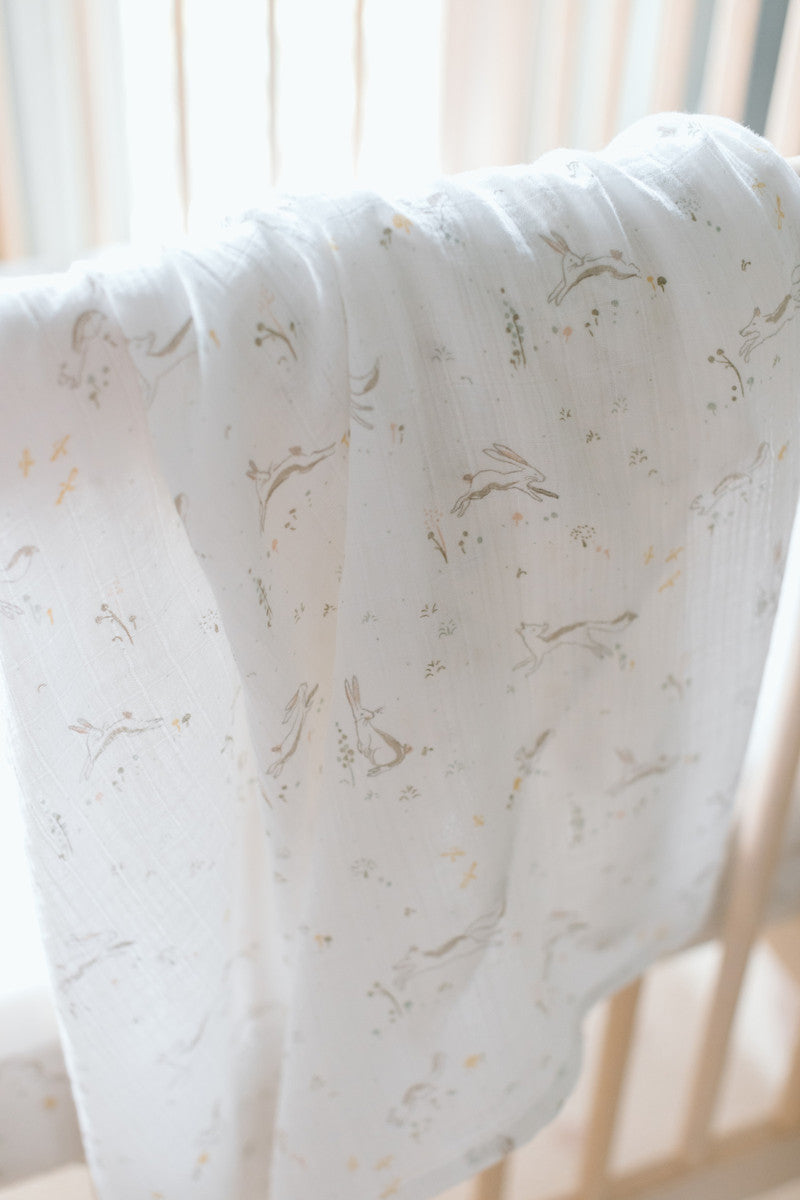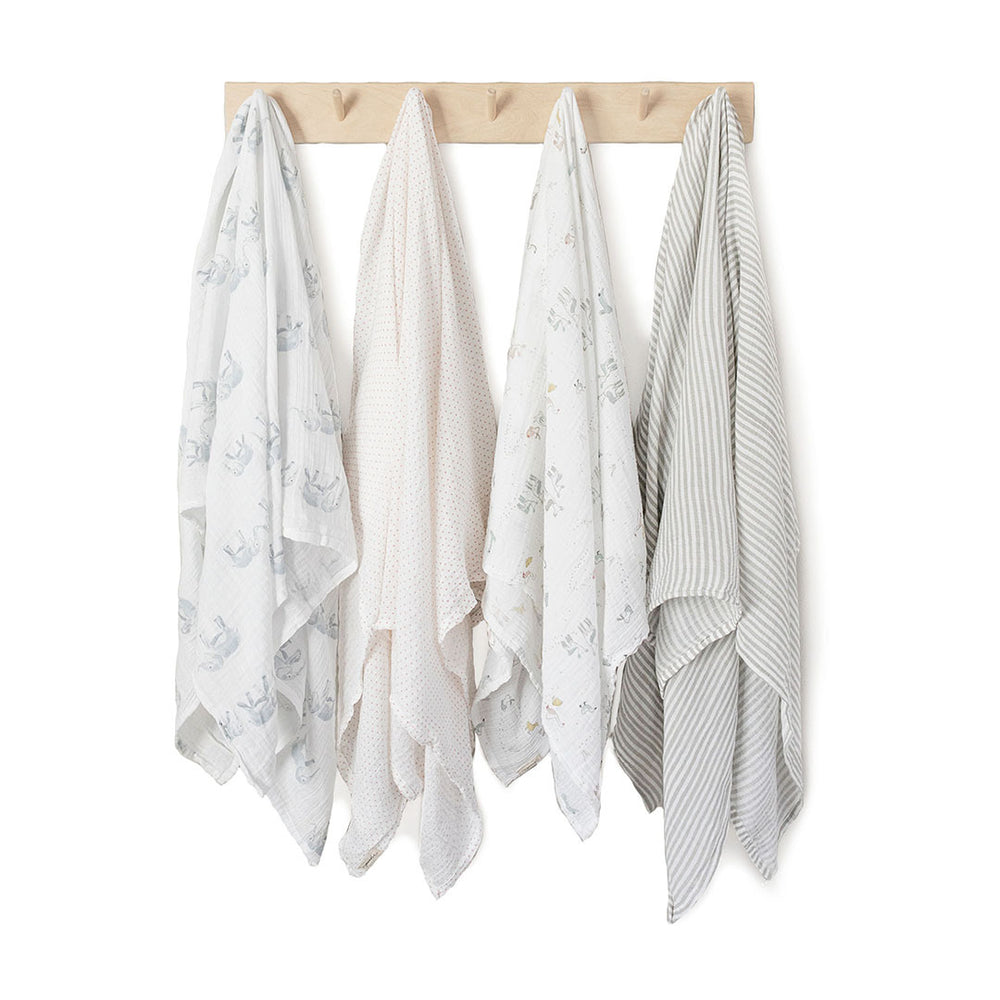How To Swaddle A Baby: Video & Step-by-Step Guide
Swaddling is an excellent skill for newborn parents to have in their parenting toolbox when they bring their new baby home. The reason why it’s important to know how to swaddle a baby is because it helps your newborn feel safe and secure. When you really sit and think about it, the transition from the womb to the world must be quite an adjustment. Swaddling mimics the environment in the womb which many babies find soothing. Anything you can do to help ease their transition will make life easier not only for your little one but for you too! So, without further ado, let’s dive into our step-by-step guide on how to swaddle your newborn baby.
For our visual learners, we’ve included a video here featuring Jessica Cherniak. Jessica is an experienced birth and postpartum doula, mother of four and grandmother. She has over 22 years of experience supporting expecting and new families through birth and baby’s first few months of life. If you’d rather read than watch, we’ve got you covered there too! Read on.
Before You Get Started
Before the swaddling begins there are a few things you can do to get ready. First, you’ll want to make sure you have a swaddle on hand. This may seem obvious but many new parents think any blanket will do, however that is not the case. Ideally, your swaddle should be constructed with 100% muslin cotton. This fabric is soft, breathable, cozy and ideal for the folding and tucks you’ll need to execute for a proper swaddle. Our swaddlers fit the bill. What’s more? We made them ultra-soft, extra-large, and 100% organic!
Now that you have your baby swaddle, the next thing you need in order to carry out each swaddling step successfully is a flat surface that is large enough for your baby and your swaddle. Make sure it’s free from clutter and any potentially dangerous objects.
The last thing you’ll need? A little patience. If this is your first baby or your first time swaddling don’t be too hard on yourself. No matter how many swaddle instructions you read, this is really a skill that requires some practice in order to perfect. So, take a deep breath and accept that you’re doing your best. Within a few weeks, you’ll be a pro. Especially with this guide to help you through! Let’s dive in.
How to Swaddle a Baby Step-By-Step Guide
Step 1

Let’s get started with your first step! Place your little one somewhere safe and secure while you prep your baby swaddle. You’ll want to create a triangle shape with the muslin fabric to get started. So, begin by placing the swaddle diagonally in front of you. To create the triangle shape, you can take the two opposite corners of the blanket and bring them together. No lay your triangle on the surface you will be using to swaddle the baby. Make sure the tip of the triangle is pointing towards you and the long edge of the triangle is furthest away from you. Before you lay your little one down on the blanket make sure the area you’ve selected to swaddle is safe. Remove any objects that might get in your way and make sure that any large pieces of furniture or decor that are in the area around you are secured to the wall and won’t fall while you’re swaddling your newborn. Once you’ve done this you’re ready to place your newborn on the swaddle.
A common topic that comes up when parents ask how to swaddle a newborn is where to place the baby when you first lie them down on the swaddle. Our rule of thumb is to place the baby across the top edge of the swaddle just above the fold. Check to make sure that the folded edge is lined up with the top of your baby’s ears. Now, you’re ready for step 2!
Step 2

Once you’ve created a triangle shape with your swaddle and you’ve lined up your little one with the top fold of the blanket, you’re ready to dive into step 2. Begin by gently straightening one of your baby’s arms along the length of their body. Next, reach for the corner of the blanket on the same side as the first arm you’ve straightened out. Wrap the edge of the blanket across the baby’s body like a cardigan sweater. Next, secure that side of the blanket by tucking it behind your baby’s back legs. To do this, we recommend rolling the baby over slightly onto the side of the arm that you’ve just straightened. This will allow you to tuck the fabric behind your baby more easily. Roll the baby back on to their back. Once that side of the blanket feels nice and secure you’re ready for step 3!
Step 3

In step 3, you’ll secure your little one’s opposite side. Just as you did in Step 2, begin by gently straightening your baby’s second arm along the length of their body. Pick up the bottom edge of the blanket (the tip of the triangle shape pointing towards you). Lift it up and over your baby’s body and tuck the edge underneath your baby’s uncovered shoulder but not over the fold of the blanket. Once you’ve secured it you’re ready to move on to step 4! Great job, you’re almost done.
Step 4

At this point your little one is likely starting to feel safe and cozy in their swaddle baby blanket which means you’re ready for the final step of our swaddle instructions. To complete the baby swaddle, you’ll want to secure the final edge of the baby blanket. To do this, grab the edge of the blanket and wrap it across your baby like a cardigan. Then, bring it around the back of the baby like a belt, give it a little tug, and, finally, tuck that last corner into the folds you’ve created at the front of your swaddle. And, that’s it, you’ve successfully swaddled your baby. Congratulations!
Frequently Asked Questions
If you plan to swaddle your baby at night it’s important to take some precautions to help avoid the risk of Sudden Infant Death Syndrome (SIDS). Firstly, you’ll want to make sure that you always put your baby to sleep on their back. This is advised under all circumstances, but it is especially important when your baby is swaddled. You’ll also want to double check that the blankets ends are securely tucked in. If a swaddle unwraps or becomes too loose, it can become a suffocation hazard. You should also ensure that the crib or bassinet where your newborn will be sleeping is free from any pillows, toys, or additional blankets. Again, this is a standard safety precaution. However, because babies tend to sleep even more soundly when they are swaddled, it’s absolutely critical if you will be swaddling your baby at night. Next, you’ll want to make sure that you monitor your baby so that they do not accidentally roll over. Additionally, keep an eye on your baby’s temperature as swaddling can cause hyperthermia. If you notice flushed cheeks, damp hair, rapid breathing, or sweating your baby may be overheating. Finally, when you swaddle your newborn, make sure that their hips can move. Do this by ensuring that the blanket is not pulled too tightly around your baby’s body. You should be able to comfortably put two to three fingers between the baby’s chest and the blanket.
Like most things related to parenting, there is not an easy answer to this question. Swaddling is a practice that has been used in many cultures for centuries. So, it comes as no surprise that it certainly has its benefits. However, there are also some risks and drawbacks. Here are a few things to consider when deciding what is best for you and your baby:
Swaddling may help your baby sleep for longer periods of time uninterrupted.
Swaddling may also help soothe your baby if they are feeling fussy as baby swaddle wraps tend to mimic the environment they experienced in the womb.
Swaddling may increase the risk of hip dysplasia (essentially, improper development of the hip joint) if the swaddle is too tight or the baby spends too much time swaddled.
This depends on a number of factors including your baby's age and temperament. Since swaddling is typically used to soothe babies, you may find you turn to swaddling more if your little one is fussy. On the other hand, if your newborn is quite calm you may not find the need to swaddle them as often. The next factor you want to consider is your baby’s age. For the first month of life as the baby is transitioning into reality outside of the womb, you may want to swaddle them more often (around 12 to 20 hours a day). As your baby begins to adjust to life outside the womb, you can start to gradually decrease the amount of time they spend swaddled.
Once your baby begins to roll over, it’s time to stop swaddling. This typically happens around two to four months after birth. Why is it recommended to stop swaddling once your baby can roll over? Because this raises the risk of SIDs. Your baby may roll over onto their stomach but not be able to return to their back at this age and that can become dangerous very quickly. Swaddling is a difficult thing to stop cold turkey for both the parents and the child. So, when you’re ready to stop swaddling your newborn, make sure you have a transition plan in place. Tackling this phase in stages will make it easier for your newborn to cope. Just be sure to keep a careful eye on them to ensure they stay safe during this transitional period.
Just like adults have different preferences, so too do babies. So always remember that every baby is different. Some take to breastfeeding while others prefer bottles. Some are great sleepers while others take more coaxing. The same goes for swaddling. While some newborns love the feeling of a swaddle, as it mimics the cozy and warm environment of the womb, others do not. So, if swaddling worked well for someone you know but it’s not working for you, don’t worry! As you and your baby bond and learn about each other you’ll figure out how to set-up the best sleep environment for your newborn. You know your baby better than anyone else, so trust your instincts.








